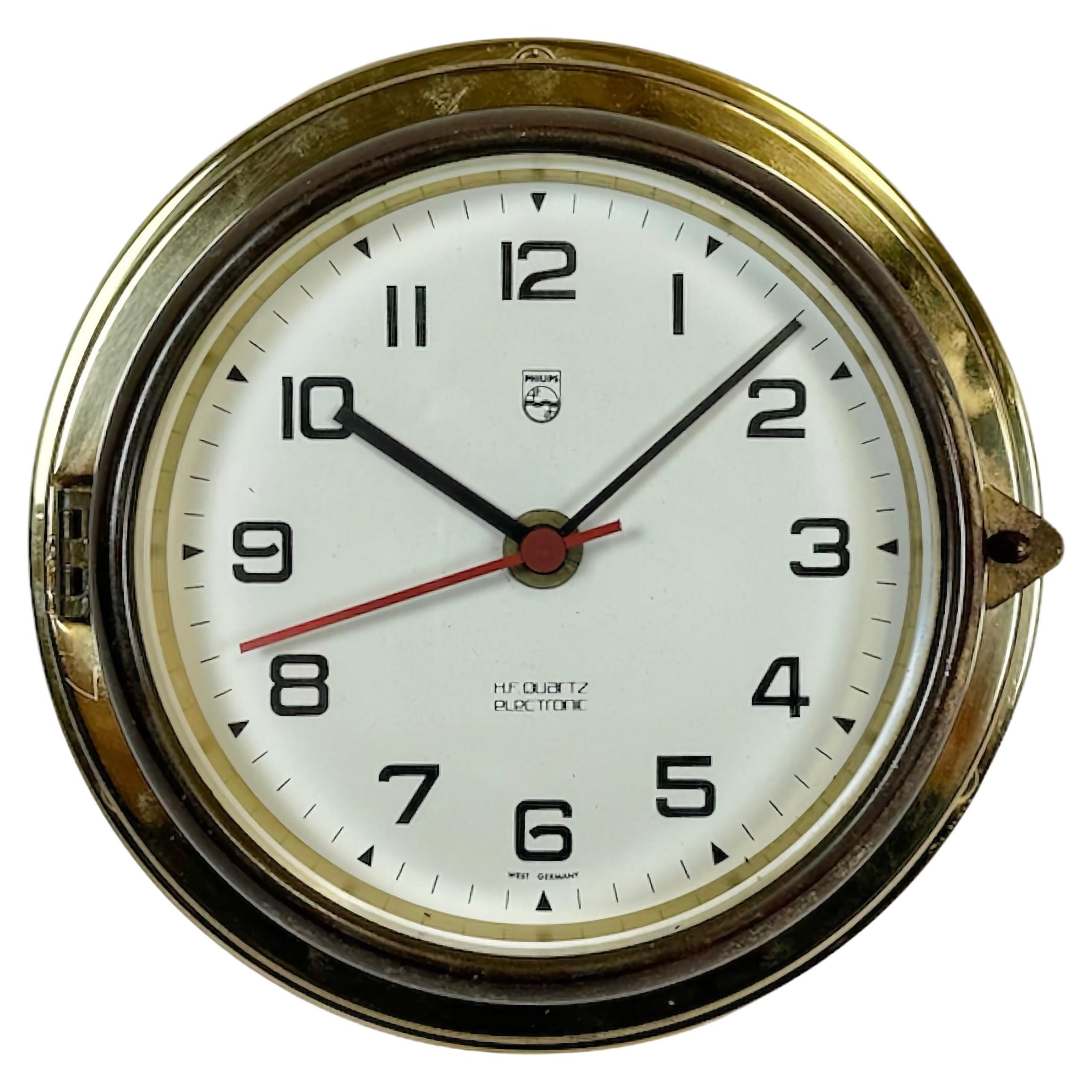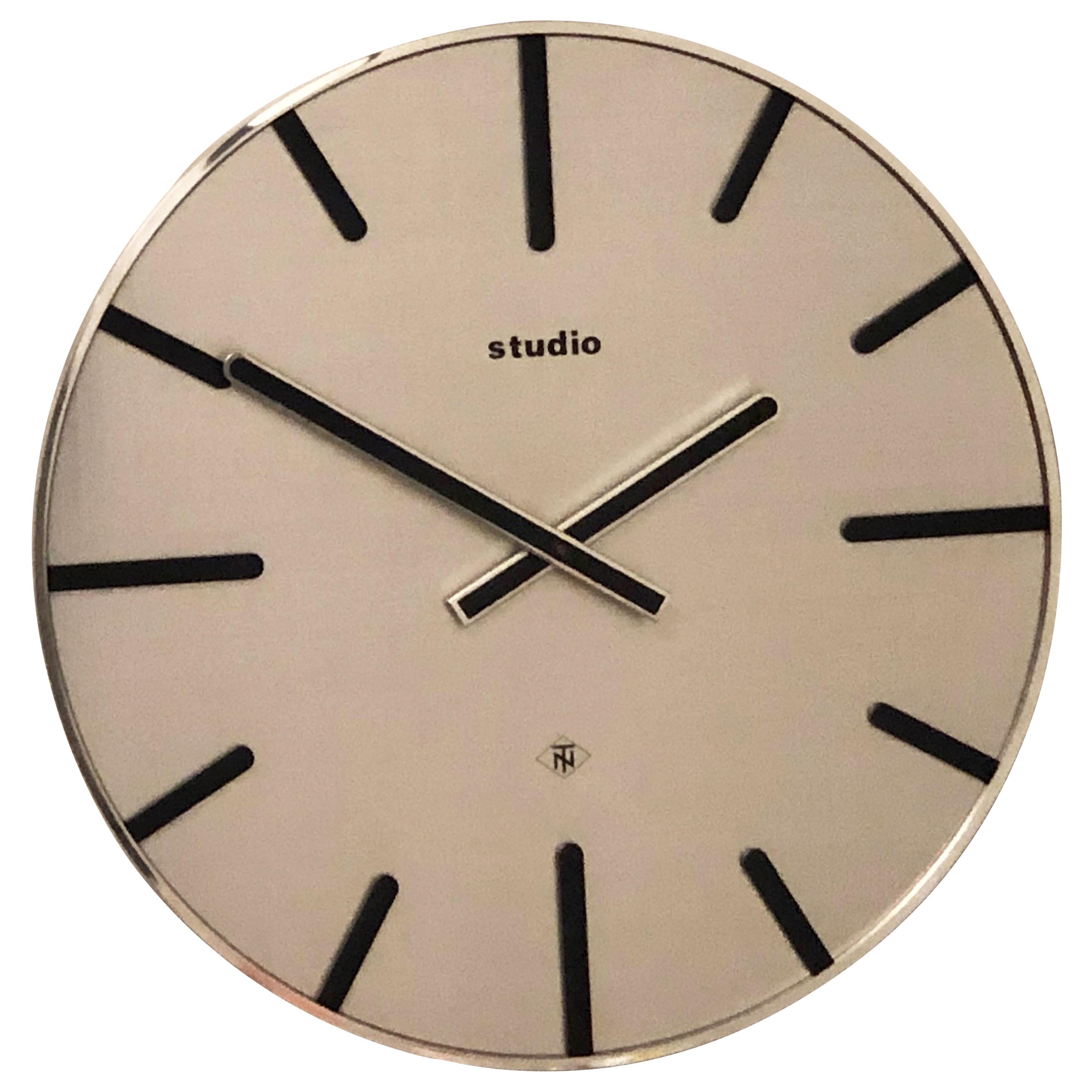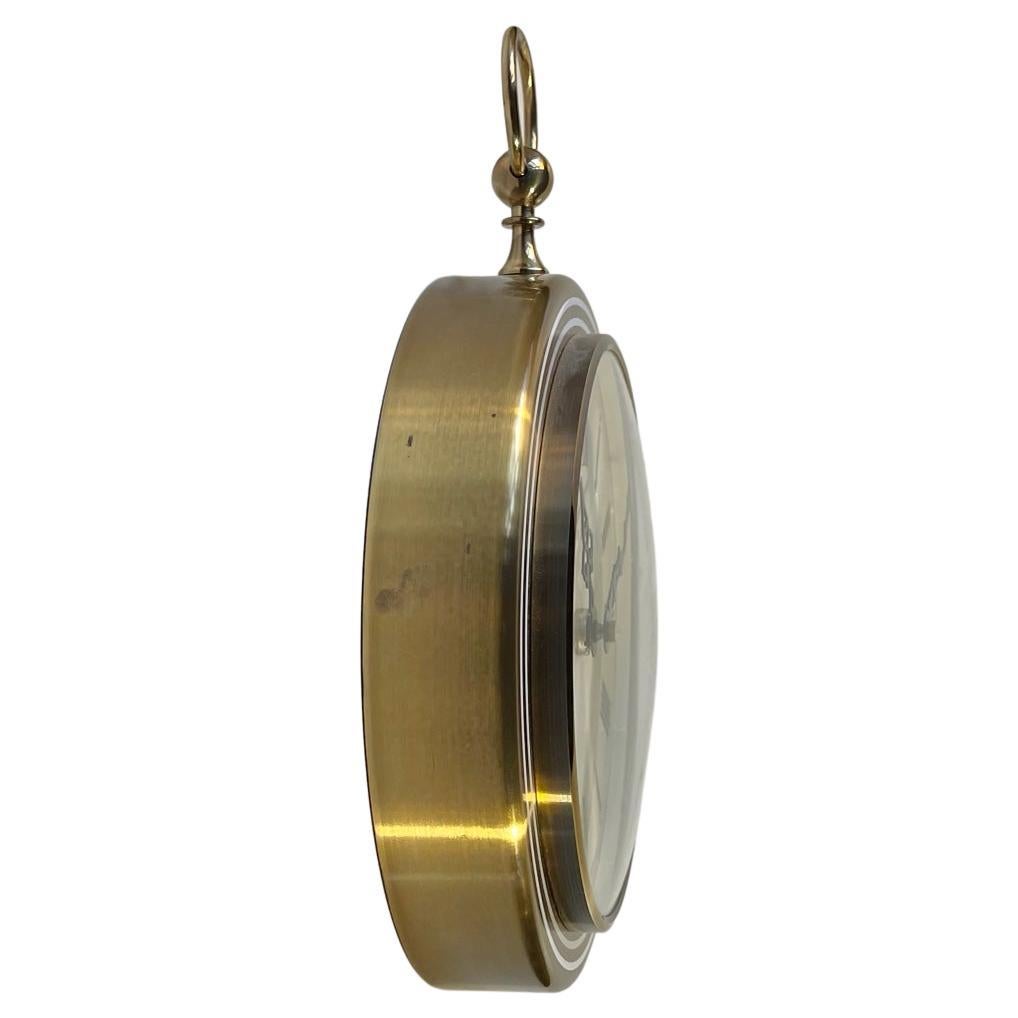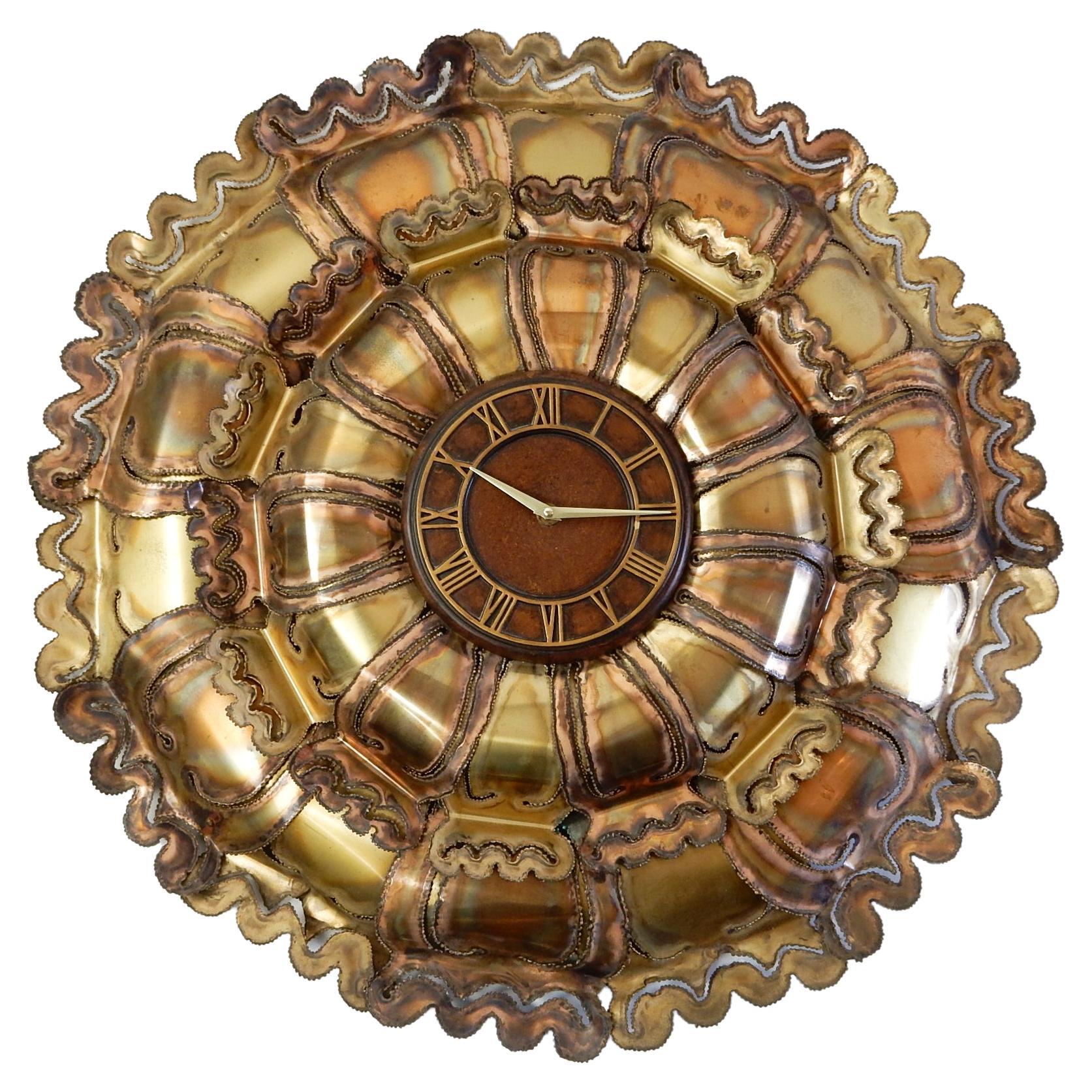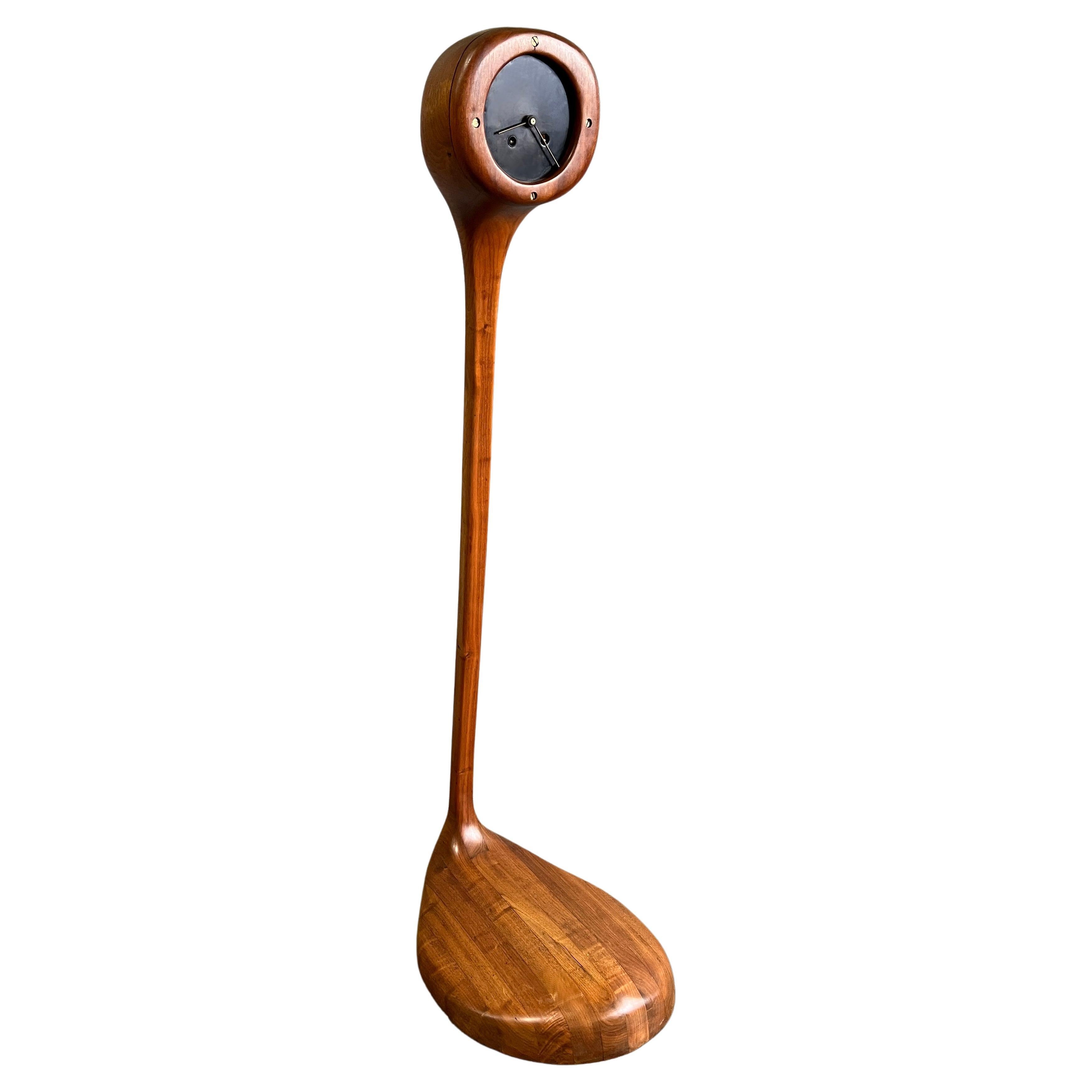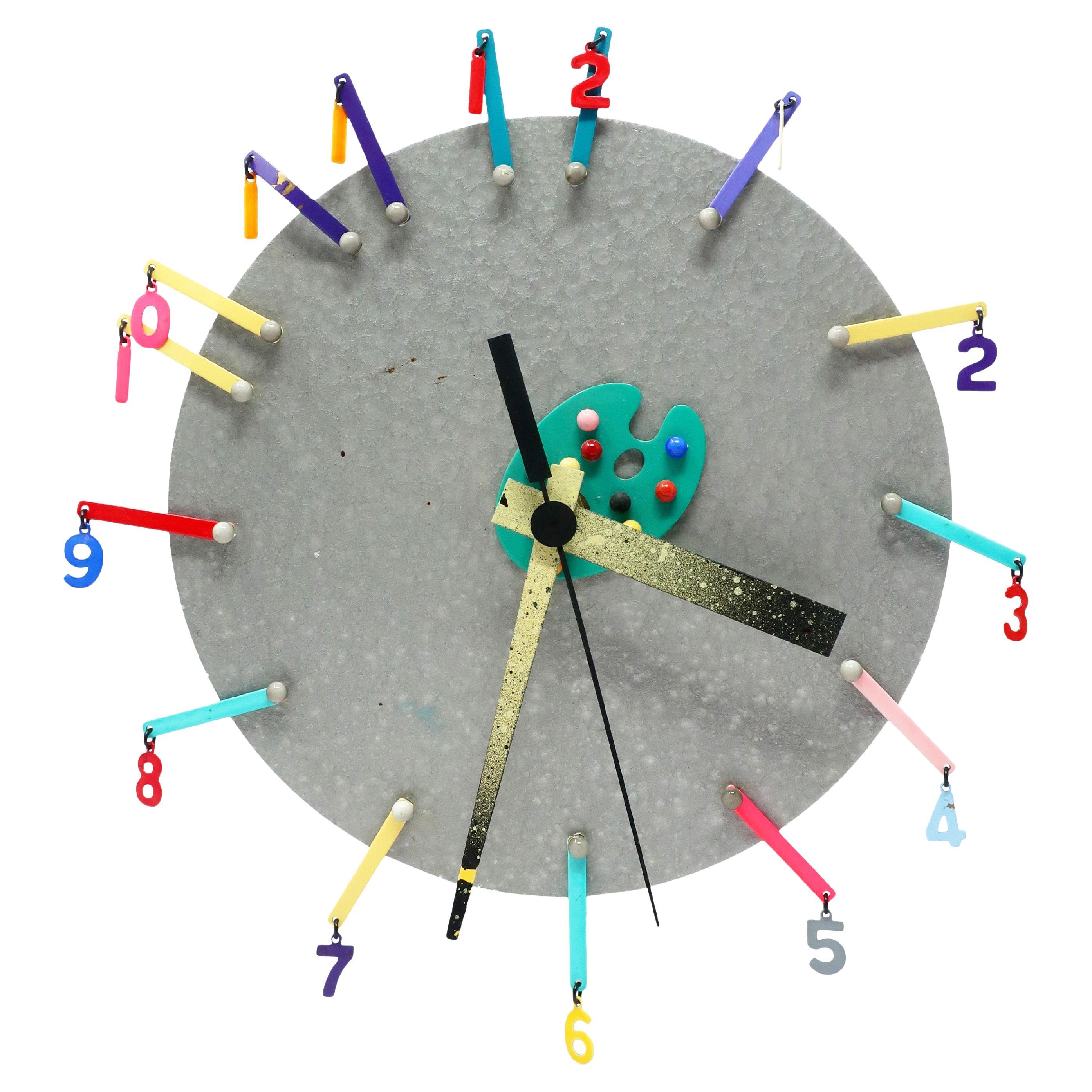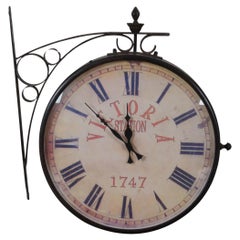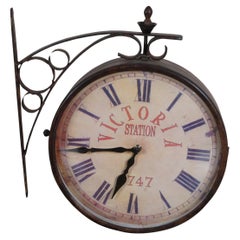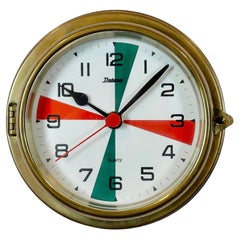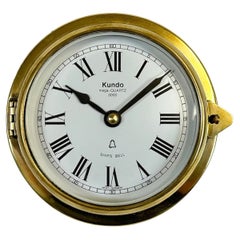
Vintage Kinetico Studios Gordon Bradt 6 Man Articulating Brass Clock Sculpture 9
View Similar Items
Want more images or videos?
Request additional images or videos from the seller
1 of 10
Vintage Kinetico Studios Gordon Bradt 6 Man Articulating Brass Clock Sculpture 9
About the Item
- Creator:Gordon Bradt (Artist)
- Dimensions:Height: 9.25 in (23.5 cm)Width: 6.75 in (17.15 cm)Depth: 4.25 in (10.8 cm)
- Style:Industrial (In the Style Of)
- Materials and Techniques:
- Period:1980-1989
- Date of Manufacture:circa 1980s
- Condition:Very good, working.
- Seller Location:Dayton, OH
- Reference Number:Seller: 342161stDibs: LU5343228721802
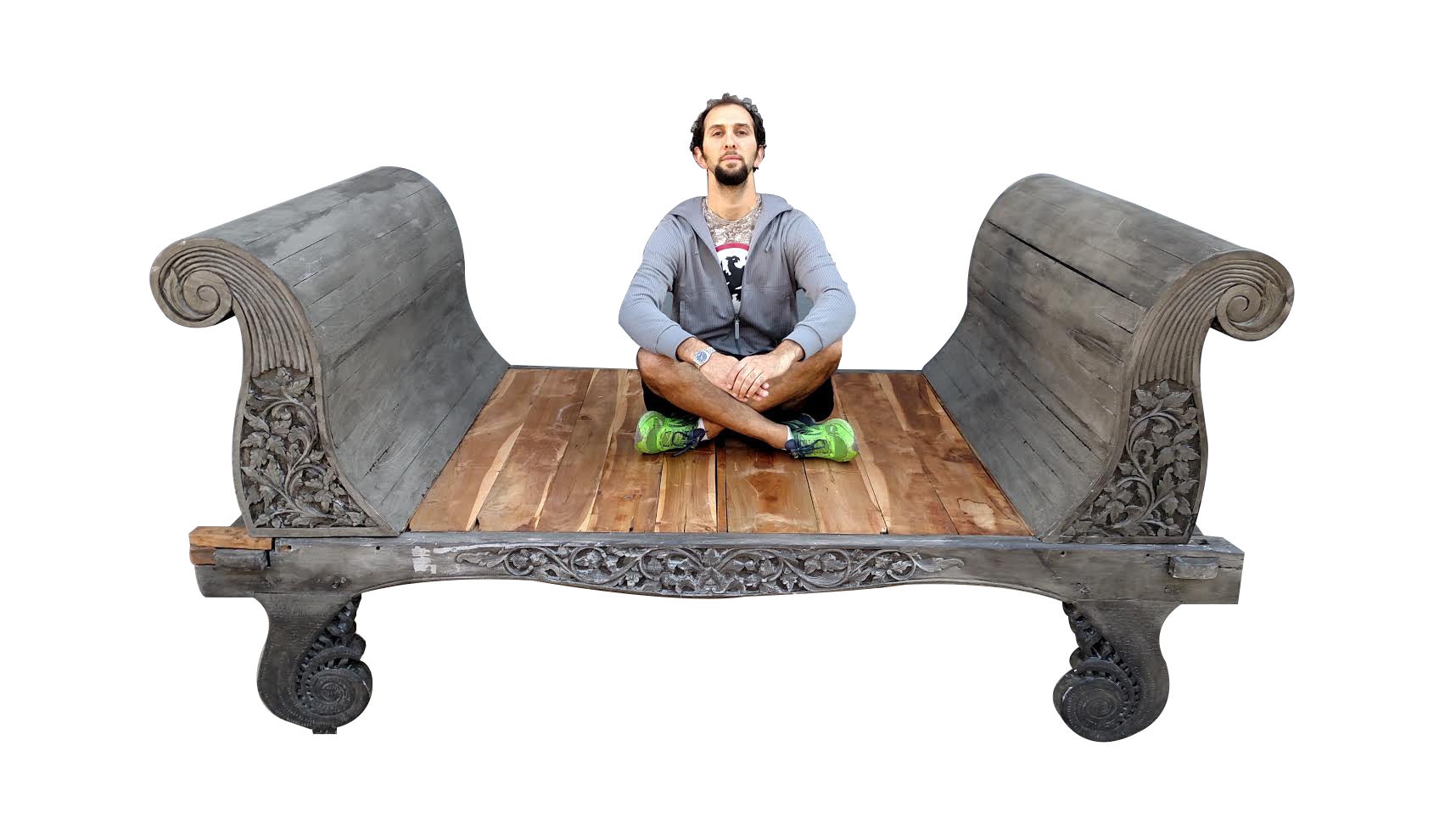
About the Seller
4.9
Platinum Seller
These expertly vetted sellers are 1stDibs' most experienced sellers and are rated highest by our customers.
Established in 2010
1stDibs seller since 2020
1,123 sales on 1stDibs
More From This SellerView All
- Vintage German Brass Ships Porthole Nautical Boat Wall Clock Mechanical MovementLocated in Dayton, OHMid 20th century key wound port hole clock. Features a brass frame with metal dial and glass window. Hangs via 3 screw holes at the base. Marked along the face EW A porthole, som...Category
Mid-20th Century Mid-Century Modern Wall Clocks
MaterialsBrass
$320 Sale Price20% Off - Vintage Victoria Station 1747 Double Sided Brass Wall Mount Railway Clock 18"Located in Dayton, OH2 Available - Late 20th century double sided railway clock styled after the famous clock at Victoria Station, London. Wrought metal wall mounted support and case in a dark bronze fin...Category
Late 20th Century Victorian Wall Clocks
MaterialsBrass
$208 Sale Price / item20% Off - Vintage Victoria Station 1747 Double Sided Brass Wall Mount Railway Clock 18"Located in Dayton, OHLate 20th century double sided railway clock styled after the famous clock at Victoria Station, London. Wrought metal wall mounted support and case in a dark bronze finish. 12 inch d...Category
Late 20th Century Victorian Wall Clocks
MaterialsMetal
$188 Sale Price20% Off - Vintage Victoria Station 1747 Double Sided Brass Wall Mount Railway Clock 14"Located in Dayton, OHLate 20th century double sided railway clock styled after the famous clock at Victoria Station, London. Wrought metal wall mounted support and case in a dark bronze finish. 10 inch d...Category
Late 20th Century Victorian Wall Clocks
MaterialsMetal
$152 Sale Price20% Off - Antique French Japy Freres Brass Champleve Enameled Cloisonne Mantel ClockBy Japy FrèresLocated in Dayton, OHAntqiue late 19th Century French Japy Freres gilt brass enameled mantel clock featuring neoclassical styling with polychrome champleve enamel accents, four columns with spire finials, beveled glass sides and trophy vase topper. Stamped with Japy Freres Medaille D'honneur stamp. Eight day striking movement. 9470. Made in France. Japy Freres was founded in 1806 by Frédéric and his sons. Frédéric Japy (1749-1812) was a pioneer in the ""art"" of industrialisation and manufacturing. Watches/clocks were made individually, by hand, by one or more people and then assembled. Japy Freres manufactured their clocks and watches in one place on a production line using machines...Category
Antique Late 19th Century Neoclassical Mantel Clocks
MaterialsBrass, Enamel
$2,800 Sale Price20% Off - Rare Self Winding Clock Co Naval Observatory Time Western Union Wall Clock 26"By Self Winding Clock Co.Located in Dayton, OHAntique Western Union, Naval Observatory Time, self winding clock. Features a tall wooden case with carved corners and pediment mounted with tin sign reading "Naval Observatory Time Hourly By Western Union. White metal face with black Roman numerals and hands. Interior of case labeled "Property of Self-Winging Clock Co New York" and serial number on metal tag as well as on works. F Style / Vibrator movement, Serial Number 92630 (likely manufactured before 1917). Patented Oct. 4, 1898 by the Self Winding Clock Company. Fitted with Archer AC Adapter. "The Self Winding Clock Company (SWCC) of New York began business in 1886 marketing their own electro-mechanical clocks based on the 1884 electro-mechanical clock patent of one of the company founders, Chester Pond (1844-1912). The innovative principle of this clock mechanism was the incorporation of a small electric winding motor that automatically rewound the mainspring after the clock ran for one hour. The clocks were powered by batteries. The batteries would last at least one year. By being automatically rewound each hour, the strain on the mechanism was kept to a minimum, resulting in a very accurate timepiece. At about the same time SWCC began selling clocks, Pond was developing an electro-mechanical synchronizer attached to the clock movement that could synchronize the clock hands to an accurate time source. The synchronization occurs when a remote, precisely timed, electrical impulse is sent via wires connected to the individual clocks. By 1887 the synchronizers had been so improved that the Self Winding Clock Company could not only market individual clocks but also sell entire synchronized clock systems. By the 1960’s the days of individual elegant mechanical timepieces and synchronized time systems were over. SWCC ceased operations in the late 1960’s. All company records and inventories were relegated to the trash pile. The STYLE “F”, or as commonly referred to, the VIBRATOR movement was developed by Frederick M. Schmidt in the late 1890’s. By 1898 the “F” movement was being installed in almost all SWCC clocks. The movement has a Graham dead beat escapement. The “F” movement incorporates both the time train and winding motor in one set of plates. The motor used a single pair of coils. It was more reliable and easier to service than the rotary movement. The mainspring is re-wound after running for one hour. The vibrating armature oscillates up and down carrying a winding lever with a pawl that turns the winding wheel. The “F” movement was used in individual clocks and in clocks that were part of synchronized systems. It was made in 60, 80,120 and 140 beat versions. There were virtually no changes to the movement in 60 plus years the movement was in production. Almost all Style “F” movements wound on 3 volts DC. Style “F” movement serial numbers started in the 33,000’s and the first movements were probably made in 1898. The earliest plates had patent dates of 1891, 1892 & 1898. Serial numbers with these patent dates go up to the 63,000’s and were made before 1908. By 1908 the plates only had the 1898 patent date. By using catalog images of movement serial numbers it can be concluded that movements with serial numbers up to 112,000 were made in or before 1917. Movements with serial numbers up to 196,000’s were made in or before 1929. The single patent date serial numbers go as high as 220,000’s. Then there appears to be a large numbering gap. Finally, movements appear with no patent dates and serial numbers with the prefix FR. These numbers start at 300,000 but only continue to about 302,000. Start again at 400,000 and continue to about 402,000. Based on the large serial number gaps, the total number of “F” movements manufactured is probably around 200,000. They were manufactured between 1898 and possibly as late as the 1950’s. SWCC both sold clocks to and partnered with their biggest customer, Western Union in a nationwide distribution of precisely accurate “Naval Observatory Time” clocks. These either 120 or 140 beat Naval Observatory clocks...Category
Early 20th Century Late Victorian Wall Clocks
MaterialsMetal
$1,360 Sale Price20% Off
You May Also Like
- Vintage Brass Maritime Clock from Datema, 1980sLocated in Kojetice, CZVintage ship clock made by Datema in Netherlands during the 1980s.It features a brass body frame and clear glass cover. The battery-powered clockwork works on 1 x C-LR14 battery. The...Category
Vintage 1980s Dutch Industrial Wall Clocks
MaterialsBrass
- Vintage German Brass Ship Clock from Philips, 1970sBy PhilipsLocated in Kojetice, CZVintage ship clock made by Philips in West Germany during the 1970s.It features a brass body frame and clear glass cover. This item has been converted into a battery-powered clockwor...Category
Vintage 1970s German Industrial Wall Clocks
MaterialsBrass
- Vintage German Brass Ship Clock from Kundo, 1970sBy KundoLocated in Kojetice, CZVintage ship clock made by Kundo in West Germany during the 1970s.It features a brass body frame and clear glass cover. The battery-powered clockwork works on 1 x C-LR14 battery. Th...Category
Vintage 1970s German Industrial Wall Clocks
MaterialsBrass
- German TN Telenorma Studio Electric Wall ClockLocated in Vienna, ATBody made of steel and aluminum and also aluminum hands partialy black painter made by TN Telenorma in the late 1970s. Formerly an office or factory sl...Category
Vintage 1970s German Industrial Wall Clocks
MaterialsSteel
- Vintage German Wall Clock in BrassLocated in Esbjerg, DKA pocket watch shaped quartz (batteri-operated) wall clock featuring solid brass frame, Roman numerals and a sunburst dial in silver enamel. Manufacture...Category
Vintage 1970s German Mid-Century Modern Wall Clocks
MaterialsBrass
$322 Sale Price20% Off - Clock Man, Wind-Up Clock with Key, Spelter, Hand-PaintedLocated in Verviers, BEClock Man - Wind-up clock with key - Spelter, hand-painted We prefer to sell our items in 'uncleaned' condition so that the new owner still has the choice to remove the patina (si...Category
Vintage 1930s French Table Clocks and Desk Clocks
MaterialsSpelter
Recently Viewed
View AllMore Ways To Browse
Vintage Brass Mantel Clock
Vintage Haller Clock
Big Clocks
Push Pull Brass
Industrial Vintage Gears
Water Clock
Big Vintage Clock
Big Vintage Clocks
Seattle Used Office Furniture
Retro Grandfather Clock
Seattle Office Furniture Used
1983 Wine
Led Clock
Vintage Brochure
Three Train Clock
Gear Model
Electric Motor
Sculpture 6ft

